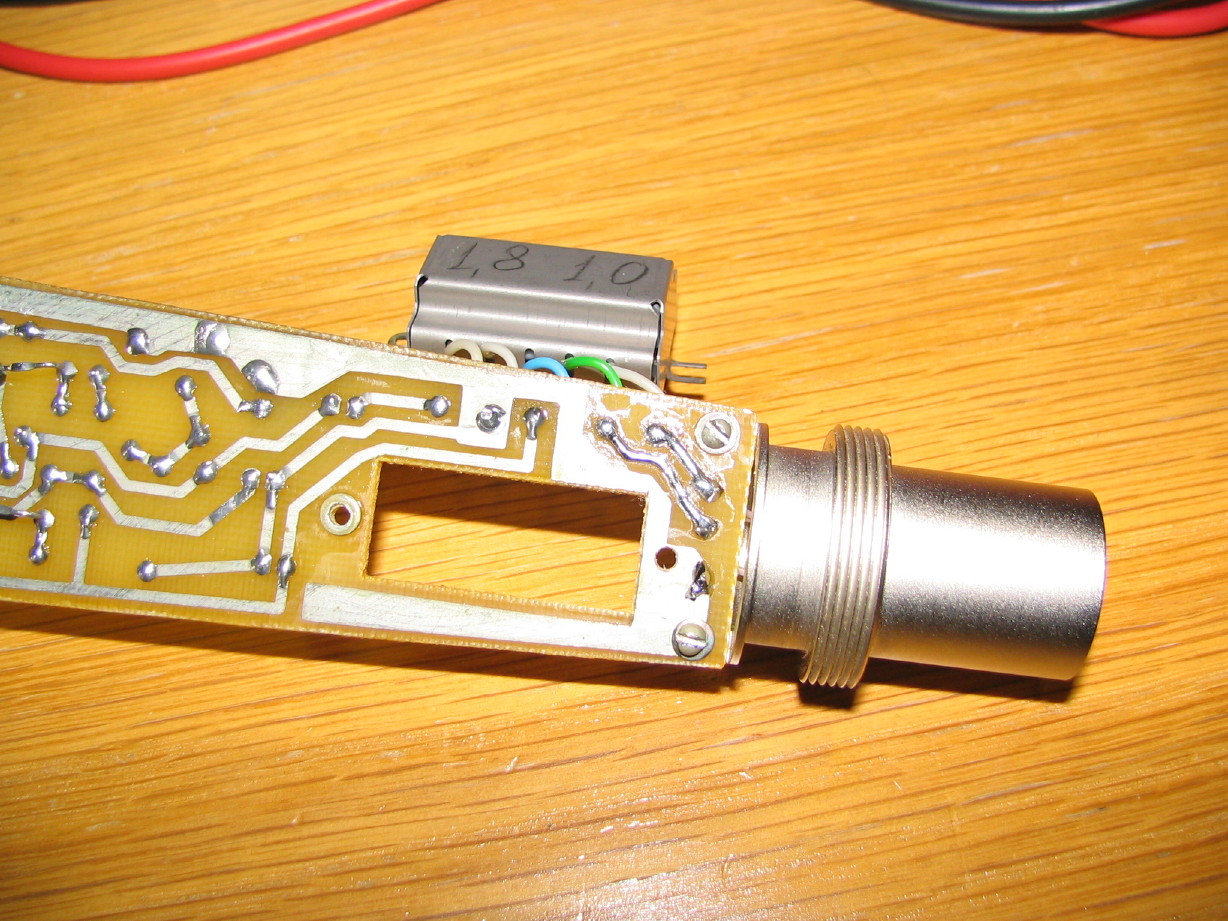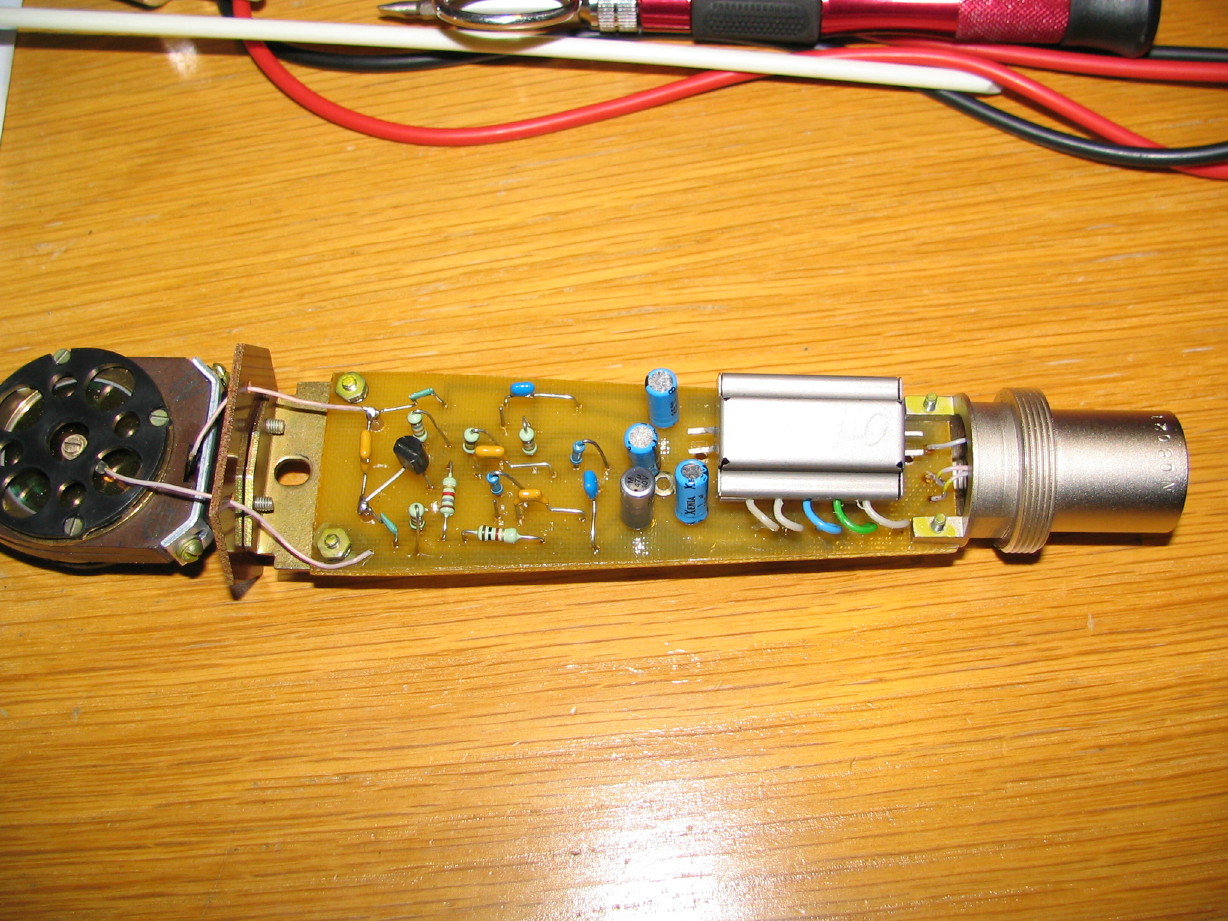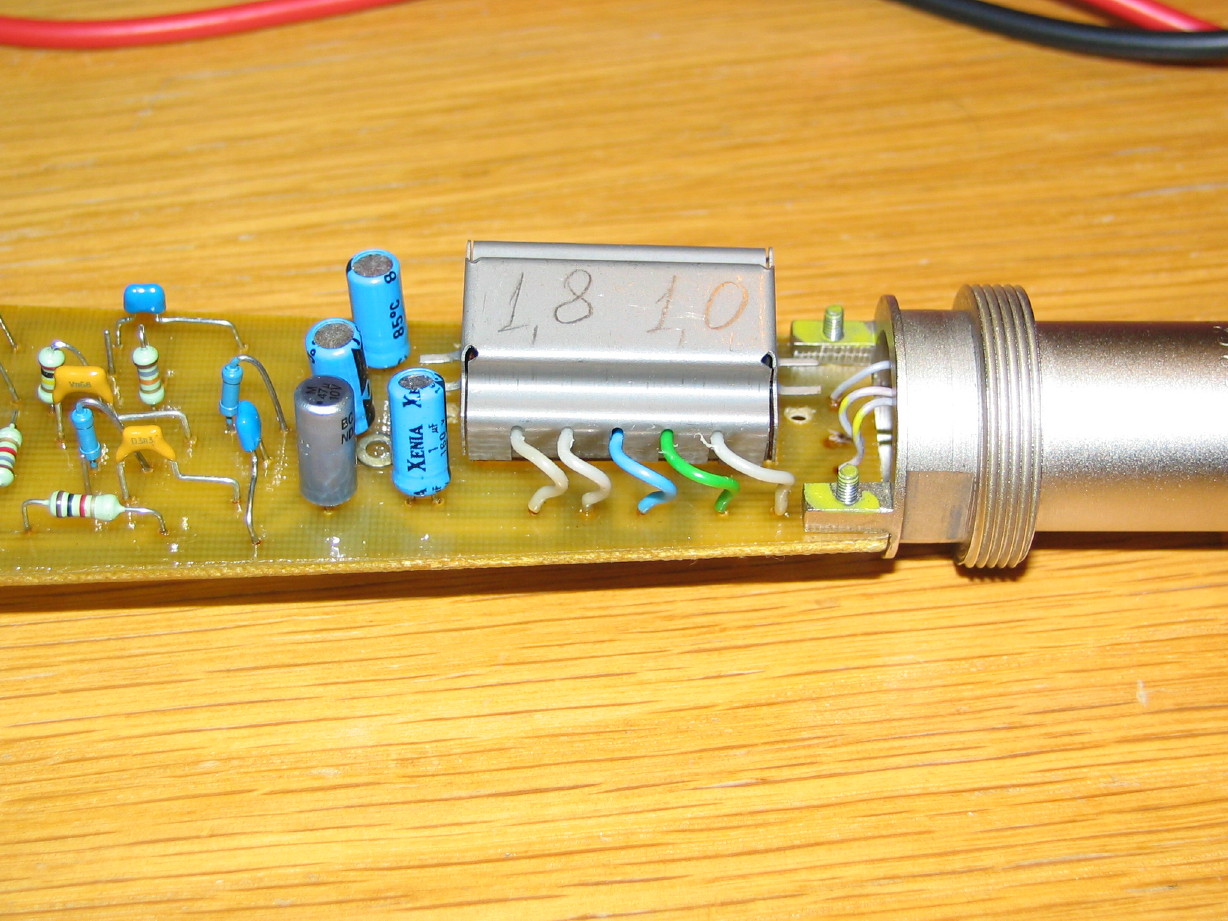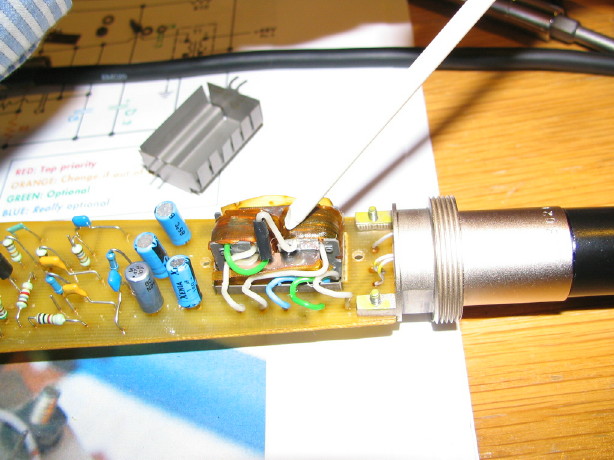sweetbeats
Reel deep thoughts...
Sorry..maybe this is the wrong spot for this and Mr. Moderator please move if needed.
I recently came into possession of an Oktava MK-219 LDC. It is finicky (part of the reason it came to me since I know enough to be dangerous and I seemingly have no sense not to open stuff up and start poking things...)
It'll cut in and out completely at random or get very thin and weak sounding with greatly diminished output. So far I've:
I could get it to come back to life by flicking the bottom area of the body with my finger. I opened it back up again and checked the wiring from the jack to the PCB and its good. Found I could get it to exhibit the problem by gently flexing the bottom area of the PCB so I suspected a bad solder joint or cracked trace so I refreshed the solder joints in that region and layered solder over a couple of the traces...you can see that work here in the upper right of the PCB:

Well, that didn't make any difference. Then I started tapping on the tranny and found that simply tapping on it causes the intermittent performance. I can get it to come back to life by touching one of the two traces I modified (which come from pins 2 and 3 of the XLR) with any metal tool held in my hand.
So now I'm stuck with what to do. Not sure if a faulty tranny is potentially a repairable issue (never worked on transformers) or if it is time to replace it and if so is it possible to get a drop in replacement for that and where.
Can anybody help?
Here are a couple more pictures of the innards:


BTW, I was really impressed with it in stock form when it was working. I've been really dissatisfied with my Studio Projects C1 and the MK-219 confirms my dissatisfaction. It was so much smoother and handled a difficult vocal source (very powerful cutting vocal quality) like no other mic in my collection.
Here is a schematic:
I recently came into possession of an Oktava MK-219 LDC. It is finicky (part of the reason it came to me since I know enough to be dangerous and I seemingly have no sense not to open stuff up and start poking things...)
It'll cut in and out completely at random or get very thin and weak sounding with greatly diminished output. So far I've:
- tested/swapped cables
- tested other mics on the same preamp and phantom supply
- clipped one pole of each of the magnetic reed swtiches for the lo-cut filter and pad effectively removing those functions from the loop
I could get it to come back to life by flicking the bottom area of the body with my finger. I opened it back up again and checked the wiring from the jack to the PCB and its good. Found I could get it to exhibit the problem by gently flexing the bottom area of the PCB so I suspected a bad solder joint or cracked trace so I refreshed the solder joints in that region and layered solder over a couple of the traces...you can see that work here in the upper right of the PCB:

Well, that didn't make any difference. Then I started tapping on the tranny and found that simply tapping on it causes the intermittent performance. I can get it to come back to life by touching one of the two traces I modified (which come from pins 2 and 3 of the XLR) with any metal tool held in my hand.
So now I'm stuck with what to do. Not sure if a faulty tranny is potentially a repairable issue (never worked on transformers) or if it is time to replace it and if so is it possible to get a drop in replacement for that and where.
Can anybody help?
Here are a couple more pictures of the innards:


BTW, I was really impressed with it in stock form when it was working. I've been really dissatisfied with my Studio Projects C1 and the MK-219 confirms my dissatisfaction. It was so much smoother and handled a difficult vocal source (very powerful cutting vocal quality) like no other mic in my collection.
Here is a schematic:


